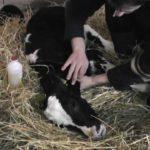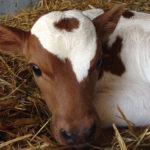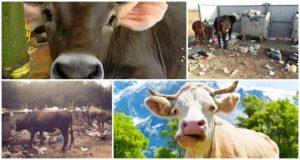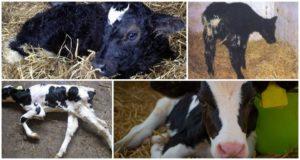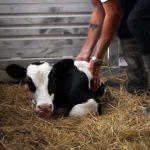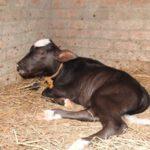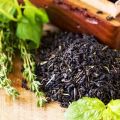Symptoms and diagnosis of dyspepsia in calves, treatment regimens and prevention
Calf dyspepsia is a serious pathology characterized by digestive disorders, metabolic problems, and general intoxication. This condition is a real danger, as it can provoke the appearance of dehydration. As a result, the calves may die. To avoid such problems, you need to engage in disease prevention.
What is this disease?
Dyspepsia is understood as a pathology that occurs in the first 10 days of calves' life. It is characterized by a pronounced intestinal disorder. The disease itself is not dangerous. However, a high percentage of deaths are due to severe dehydration and loss of beneficial elements.
In other words, dyspepsia is the toxic reaction of newborn calves to maternal colostrum. Its appearance is due to a lack of important substances during pregnancy. Insufficient development of the digestive organs in calves is considered another factor.
The first sign of the disease appears already in the first 2 hours after the calf receives the first portion of colostrum. This leads to a strong metabolic disorder, dehydration, and growth and development retardation. At the same time, the calves cannot assimilate breast milk. If you don't help in time, most of the animals will die.
Causes of occurrence
The key reason for the development of dyspepsia is considered to be a violation of the recommendations for raising and breeding animals. This may be improper nutrition or non-compliance with microclimate conditions. Another factor that causes the development of the disease is the insufficient development of the digestive system. As a result, intestinal pH is disturbed, toxic elements and putrefactive microflora are produced.
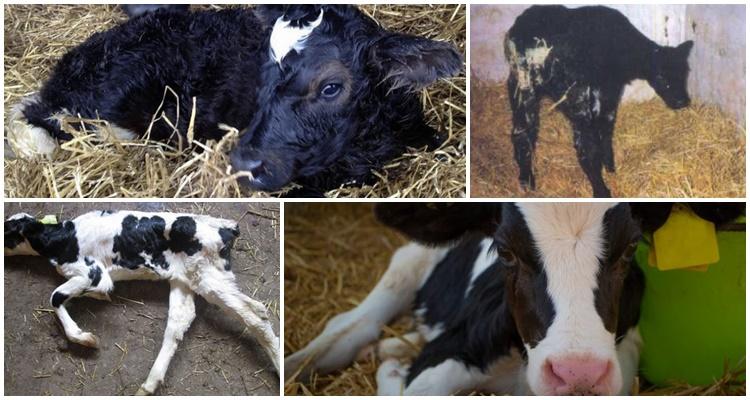
The main causes of problems include the following:
- improper nutrition of cows;
- lack of walking;
- late launch;
- overfeeding calves;
- cold or sour colostrum;
- violation of sanitary and hygienic rules.
Forms and symptoms of the disease
Dyspepsia can be of 2 forms - simple and toxic. In the first case, the calf looks lethargic and weak, it partially loses its appetite and seems depressed. The animal does not stand after birth. It constantly lies with its neck stretched out and shakes. Around day 2, yellow diarrhea appears. At this stage, treatment always has a favorable prognosis and helps to completely eliminate the disease.
Toxic dyspepsia appears suddenly in the first days of newborns' life. At the same time, the calves lose their appetite, their temperature drops, the skin becomes cold.Diarrhea often contains mucous impurities. If measures are not taken in time, the animal dies due to intoxication and dehydration.
The main symptom of the disease is general weakness and depressed appearance. The calf also has diarrhea. Such signs appear at the very first stage of the disease. Sick babies often lie on their side and look at the stomach. They can give up some or all of the colostrum. In more difficult situations, calves will moan or moan. They often have a decrease in body temperature, an increase in pulse and respiration is observed.
In difficult cases of pathology, severe dehydration occurs. In this case, calves are faced with severe weakness, sinking eyes, dry mucous membranes. Their coat becomes tousled. Often there is a tremor in the body, loss of sensitivity, dry skin. Before death, the skin turns pale or blue. An increase in heart rate is also observed. The death of an animal usually occurs in 2-5 days.
Diagnosing the problem
To make an accurate diagnosis, you need to assess the dynamics of the animal's well-being over several days. With common dyspepsia, calves experience weakness and decreased motor activity. Feces acquire a yellow tint and an unpleasant odor. There is also a risk of involuntary bowel movements. If you press on the belly, the calf will get nervous.
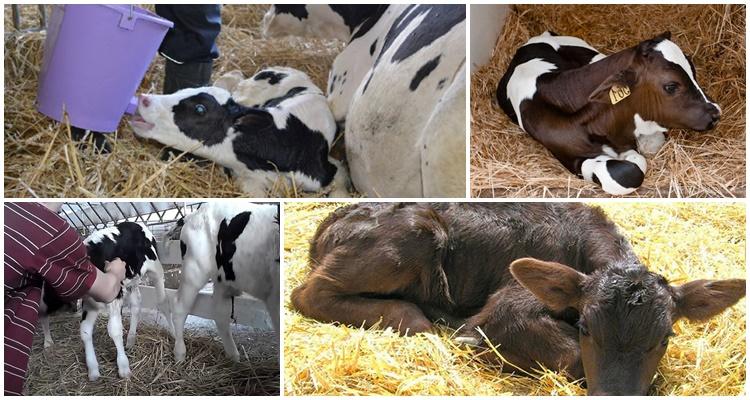
The appearance of such signs is the basis for contacting a veterinarian. The doctor will make a diagnosis based on the clinical picture and blood test. This test will help identify abnormalities in electrolyte composition and a decrease in potassium levels. Also, with dyspepsia, leukocyte counts and ESR decrease.
Calf dyspepsia treatment regimen
To cope with a simple form of the disease, it is recommended to follow these rules:
- discard the next 2 servings of colostrum;
- give warm saline at a concentration of 1%.
After 12 hours, the baby's condition should be restored. When diarrhea stops, the frequency of feeding is doubled. In this case, the portion size must be reduced by 2 times. During the week, food must be returned to the standard. At the same time, it is recommended to give the calf 500 ml of saline before each meal. It should be at room temperature. It is important to keep in mind that sugar should not be used instead of glucose as this will worsen the calf's health.

With a toxic form of the disease, it is worth doing the following:
- discard colostrum;
- on the first day, give saline to normalize digestive functions and restore water balance;
- on day 2, reduce the daily rate by half and give food in equal portions 4 times a day;
- use a course of antibiotics to suppress putrefactive microflora;
- to use sulfonamides to fight bacteria.
Nutrition correction
Colostrum should not be given to the calf when simple or toxic dyspepsia occurs. It should be replaced with saline. It is a 1% sodium chloride solution. The liquid temperature should be 38 degrees.
It is recommended to keep the calf on half of the colostrum for the next 3-4 days. The other half should be replaced with saline. It is also permissible to give decoctions of medicinal plants or rice. Within a month after the illness, you need to continue to give saline and smoothly restore the milk rate. All fluids are recommended to be given through the teat.This will help prevent excess milk from entering the body and prevent the disease from recurring.
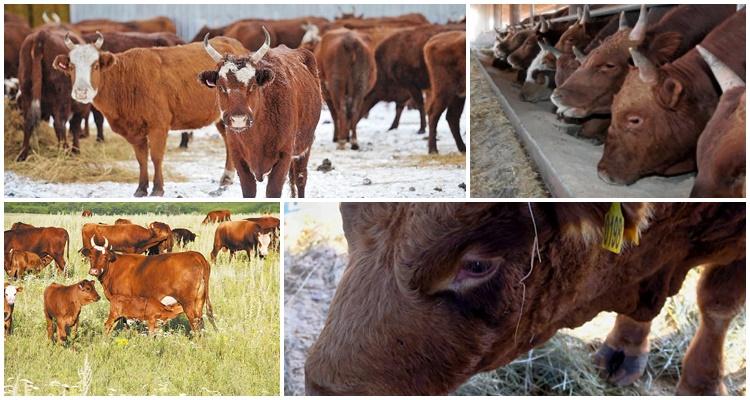
Novocaine blockade
This procedure helps to cope with intense pain syndrome. In this case, the drug is recommended to be administered to cattle in the affected area. The choice of a remedy or a combination thereof depends on the required duration of the effect and the degree of pain intensity. To reduce discomfort in the digestive tract, it is recommended to use 1 milliliter of novocaine solution with a concentration of 0.5% per 1 kilogram of body weight. The injection should be performed in the first hunger hole. Moreover, the needle is recommended to be inserted 20-30 millimeters.
Compensatory treatment
In veterinary medicine, treatment is called compensatory, in which the functions of the affected organ are replaced by another. With the development of dyspepsia, compensation for the work of the intestines is required. For this, the animal is given a solution of gastric juice with a concentration of 50%. It is recommended to do this 20 minutes before meals. The use of this tool helps to get the following results:
- make up for the lack of enzymes;
- stimulate the function of the pancreas and activate the synthesis of gastric juice;
- regulate acid-base balance;
- restore intestinal microflora;
- disinfect the digestive organs;
- facilitate the digestibility of milk.
An electrolyte solution is required to replenish the water and electrolyte balance. To do this, you can buy ready-made drugs - for example, "Regidron". You can also make the solution yourself.
Specific therapy
If the situation is complicated by infection or bacterial contamination, the calf must be treated with antibiotics, sulfonamides and nitrofurans. Antibacterial agents can only be prescribed by a doctor. Most often, "Tetracycline" is used for dyspepsia. It helps to fight most infections. The course of treatment lasts 4 days. In this case, the agent must be taken 3-4 times a day.
Sulfonamides have an antibacterial effect. They also stop inflammation and deal with the production of toxins. This group includes "Sulgin", "Ftalazol", "Ftazin". Nitrofurans are needed to suppress gram-negative and gram-positive microflora. These include "Furacilin", "Furagin". The course of therapy lasts 3-4 days.
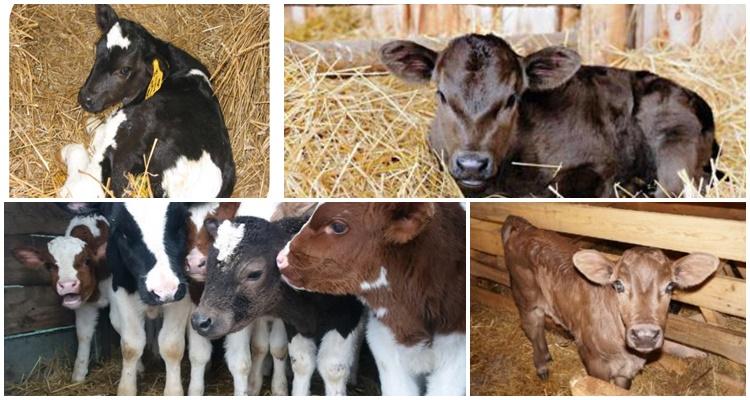
Folk remedies
Herbal and enveloping decoctions can be used to treat the calf. It is recommended to cook them over low heat for half an hour. Usually a handful of plant materials are used for 2 liters of water. For dyspepsia, herbs are shown that have an astringent effect. These include oak bark, elecampane, St. John's wort. You can also use alder cones. For enveloping decoctions, rice, flaxseeds, and oatmeal are used.
Preventive actions
For the prevention of pathology, it is recommended to follow these rules:
- provide the cow with a sufficient amount of vitamins and minerals at the dead stage;
- after calving, provide the female with a balanced diet;
- observe sanitary and hygienic standards in the barn;
- maintain the optimal temperature in the room;
- isolate sick animals immediately.
It is recommended to start feeding the calf with colostrum only 1 hour after giving birth, and the food should be from a healthy cow. Dyspepsia is a rather complex pathology that is often found in calves. To cope with it, it is recommended to immediately contact your veterinarian and follow his instructions.

